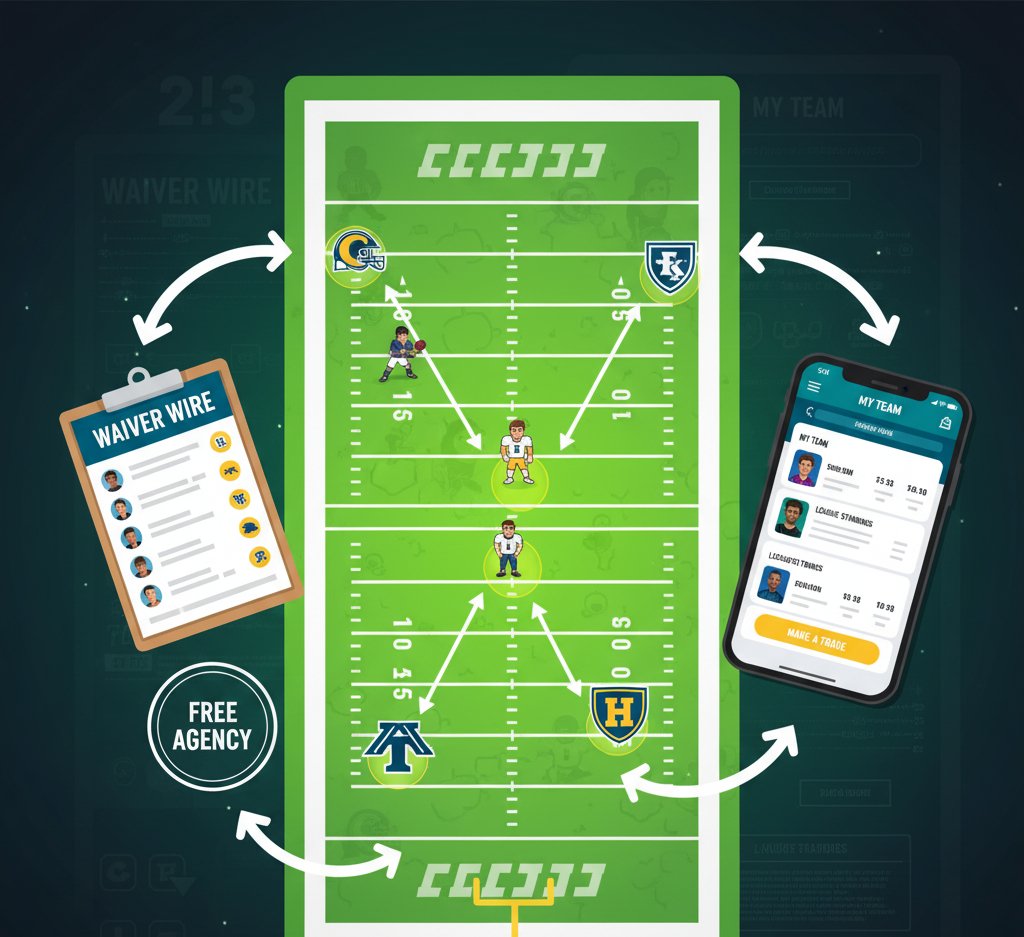Fantasy football is one of the most exciting ways to follow the NFL season. Whether you’re a casual player or a competitive manager, understanding waivers is essential to building and managing a winning team. Waivers determine how free agents are added to rosters, making them one of the most strategic aspects of fantasy football.
If you’ve ever wondered, “How does a waiver work in fantasy football?” this guide breaks it all down for you—what waivers are, how they function, different types of waiver systems, and strategies to use them effectively.
What Is a Waiver in Fantasy Football?
In fantasy football, a waiver is a process that controls how managers claim unowned players. Instead of being instantly available to the first person who sees them, players who are dropped or recently played are placed on waivers for a set period.
This system creates fairness, ensuring all league members have an equal chance to add top free agents instead of rewarding only those who check their app the fastest.
Why Do Waivers Exist?
Waivers are necessary because without them:
Players could be instantly claimed during games.
Active managers would dominate by scooping players right away.
Casual players would be left behind.
By adding a delay, waivers give every manager a chance to make claims, then assign players fairly based on waiver priority or budget systems.
How Long Do Waivers Last?
The length of time a player stays on waivers depends on your league settings, but the most common periods are:
1 Day (24 hours)
2 Days (48 hours)
Until Wednesday morning (in weekly leagues where games end Monday night)
After the waiver period ends, the system processes all claims simultaneously, assigning players to the winning teams.
How Does the Waiver Process Work?
Here’s the basic step-by-step:
Player Becomes a Free Agent on Waivers
This happens when someone is dropped or after they’ve played a game.
Managers Submit Claims
You can place a claim on that player before the waiver deadline.
Claims Are Processed
At the end of the waiver period, Yahoo, ESPN, or your league’s platform will process the claims.
Player Awarded
The system assigns the player based on waiver priority or FAAB (Free Agent Acquisition Budget) rules.
Types of Waiver Systems
Different fantasy leagues use different waiver systems. Here are the most common types you’ll encounter:
1. Standard Waiver Priority
All managers have a ranked order.
The team with the highest priority gets the player.
After a successful claim, that manager drops to the lowest priority.
Example: If Team A has the #1 priority and puts in a claim, they will win the player but move to the back of the line.
2. Rolling Waivers
Similar to standard priority.
Once you make a claim, your waiver position drops, and others move up.
More active managers tend to slide down faster.
3. Reverse Standings Order
Priority is based on league standings.
The worst team gets the highest priority each week.
Helps struggling teams stay competitive.
4. FAAB (Free Agent Acquisition Budget)
Each team gets a set budget for the season (example: $100).
Managers secretly bid on players using their budget.
The highest bid wins, and the amount is deducted from their budget.
This method adds strategy, as managers must carefully manage their funds.
5. Continuous Waivers
Waivers never “unlock.”
Every player goes through a claim process.
Claims are processed at a set time each week.
This ensures absolute fairness but reduces instant pickups.
Waiver Example
Let’s say a breakout running back scores 25 points on Sunday. By Sunday night, he’s on every manager’s radar.
He is placed on waivers until Wednesday morning.
Three managers submit claims.
The system processes them:
If standard waivers, the manager with the highest priority gets him.
If FAAB, the highest bidder wins.
This system ensures fairness across the league.
Waiver Tips and Strategies
Plan Ahead
Don’t just chase one-week wonders. Use waivers to build depth.Track Injury News
Injuries create opportunities for backups who might become starters.Use FAAB Wisely
Don’t blow your entire budget early in the season. Save some for playoff pushes.Prioritize Positions of Need
Claim players who strengthen weak spots in your roster.Check Drop Timing
Smart managers watch when others drop valuable players and pounce at the right time.
Common Mistakes with Waivers
Not Checking Player Eligibility: Make sure you have a roster spot ready.
Waiting Too Long: Don’t ignore the waiver wire until it’s too late.
Overbidding in FAAB: Spending too much early leaves you short later.
Ignoring Bye Weeks: Grab replacements before it’s too late.
Waivers vs. Free Agents
It’s important to note the difference between waiver players and free agents:
Waiver Players: Temporarily locked, must be claimed through the waiver process.
Free Agents (FA): Available immediately after clearing waivers.
Once a player clears waivers, anyone can add them instantly without a claim.
Final Thoughts
So, how does a waiver work in fantasy football? It’s a system that ensures fairness by giving all managers a chance to claim players before they become free agents. Depending on your league settings, claims are awarded based on priority, standings, or FAAB bidding.
Mastering waivers is one of the most important strategies in fantasy football. By paying attention to news, using your claims wisely, and managing your waiver budget, you can build a strong roster that keeps you competitive all season long.
Whether you’re playing on Yahoo, ESPN, or Sleeper, understanding waivers gives you the edge to outsmart your league mates.

